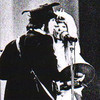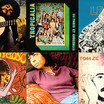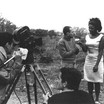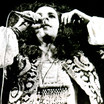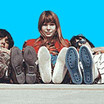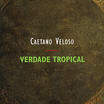Ruídos pulsativos
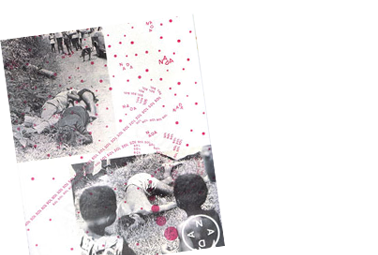
Marginália
“Mimeographed poetry” was one of the terms used to describe the production of poets who, during the 70s, began to launch their books in the form of copies made on photocopiers or stencils. These small editions were sold from hand-to-hand, often in handmade envelopes or other homemade covers, completing an alternative process of creation, production and distribution of the poem. With just a few copies, their work had a restricted circulation amongst a public of the initiated, people who went to the concerts, exhibitions, cinemas and fashionable bars. Also known under the generic title “marginal poetry”, this poetry was the touchstone for a whole generation who searched, through literature, for a form of cultural manifestation beyond the official standards of academia and literary criticism.
The principal protagonists were the poets Chacal, whose first two books were entitled Muito Prazer (Pleased to Meet You) (1971) and Preço da Passagem (Fare of the Journey – which it was designed to raise funds for) (1972), Charles, com Travessa Bertalha 11 (Spinach Platter 11) (1971), besides a number of other poets who, while never having published their books in hand-made form, shared the same transgressive and experimental stance. These include Francisco Alvim, Cacaso and Ana Cristina César. One must also mention collective poetical works, such as the groups Frenesi (Frenzy) and Nuvem Cigana (Gypsy Cloud). This last was led by the poets-cum-songwriters, Bernardo Vilhena and Ronaldo Bastos. Although their work varies greatly, the irreverent and transgressive attitude of these poets made up, to parody their own words, “more a poetical than a literary movement”.
Marginal poetry had its defining moment with the release of the anthology 26 poetas hoje (26 poets today) (1975), edited by Heloísa Buarque de Hollanda. In this anthology, Heloisa does an overview of the period, putting together the newer poets with those who were already identified with cultural movements such as Tropicalism and marginália. Waly Salomão, Torquato Neto, José Carlos Capinan and Duda Machado are there, along with the newcomers Chacal, Bernardo Vilhena, Ana Cristina César and Francisco Alvim. The critics lumped all of these poets together under the same label, the one that they had coined, of ‘marginals’, and not all of the poets accepted this.
Still in the field of literature, some of the authors of this period also had their novels and texts dubbed “marginal”, thus creating, in the field of prose, another facet of the experimental work undertaken by the poets. Books such as Panamérica (1968), by José Agripino de Paula, Me segura que eu vou dar um troço (Hold me back because I’m about to have a fit) (1972), by Waly Salomão, Urubu-Rei (King Vulture) (1972) and Os Morcegos estão comendo os mamões maduros (The bats are eating the ripe papayas) (1973), by Gramiro de Matos, and Catatau, de Paulo Leminski (1975), were included in this group by the literary critics of the period, despite the differences of style and intent. In 1973, the posthumous publication of the poems and writings of Toquato Neto, collected in the book Os últimos dias de Paupéria (The last days of Pauperism) became one of the bibles of the new writers: the marginal figure of the poet from Piaui remains a symbol of a whole generation.
Towards the end of the 1970s, the creative spirit of this literature was kept alive through manifestations such as the Almanaques Biotônico Vitalidade (The Biotonic Vitality Almanacs), launched by the Nuvem Cigana group in 1976 and 1977, the magazines, Anima (1977), by Abel Silva, and Malasartes (Art Suitcases) (1975-76). As the years passed, the characteristics that marked ‘marginalia’ – inconformity with Brazil’s ‘official culture’, creative vitality and the heady risk of constant poetic invention – still all remained a feature in the work of writers, becoming a living legacy for future poets and writers to follow.






